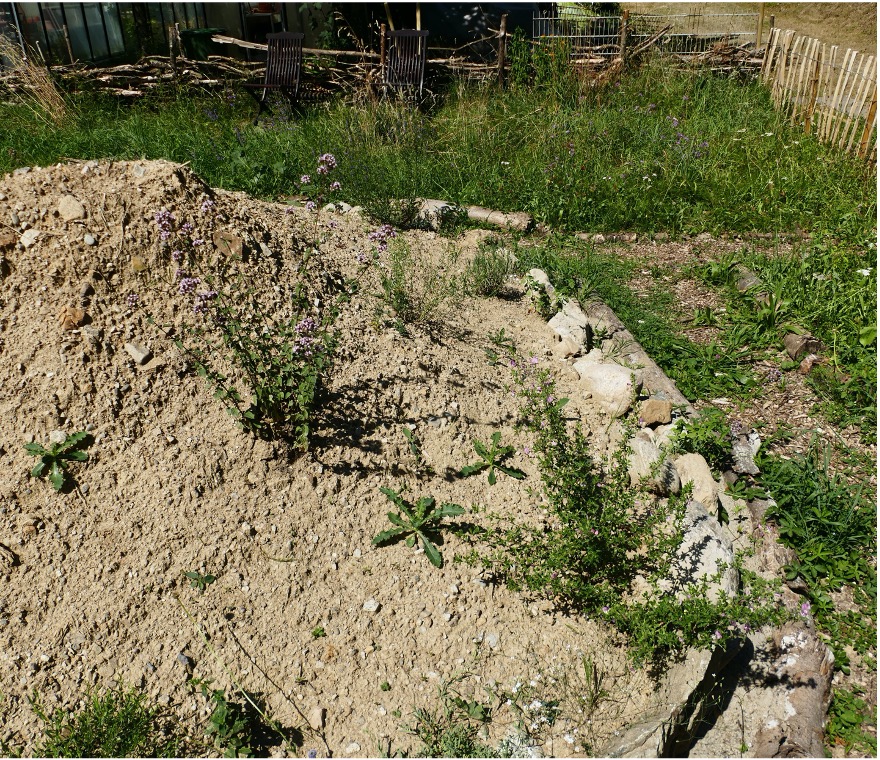Bare soils were a common feature in earlier cultivated landscapes. Cut-off edges, field boundaries, unpaved dirt roads, or dry lean limestone meadows are usually the result of past land use practices. Many of the old agricultural practices are no longer economical or difficult to establish today. Industrial agriculture on large tracts of land has displaced most of the old land uses and led to the decline of our cultural landscapes. However, many cultural species need these anthropogenically influenced landscape elements.
In the course of enhancing biodiversity, among other projects, a pond was created. The earth material from the pond excavation was used to create a nesting mound for ground-nesting wild bees. The modeling of the nesting mound is to allow for maximum heat accumulation. The east side of the mound is steeply sculpted to receive the earliest possible sunlight, while the back slopes to the southwest at a shallow angle to absorb heat throughout the day.
Ideally, material from deeper soil layers should be used for this purpose, as it is free of roots and seeds. Since the pond excavation was not completely free of roots and seeds, plants keep sprouting here. These must be carefully removed by hand without destroying the nests of the already settled bees. To prevent the soil from being washed away by rain and eroding away, the nesting aid was embedded with stones. Adjacent to it there is a layer of fine sand which is delimited with dead wood. This should create as many niches as possible to provide habitat for as many wild bee species as possible, but also for other species groups.






